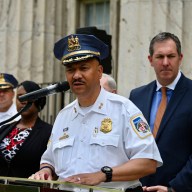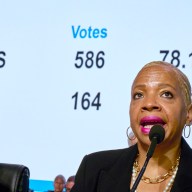When only bones remain, it’s the job of a forensic anthropologist to piece together a person’s past.
Dr. Martin Evison, 47, is one such forensic anthropologist skilled at unravelling the stories bones often tell.
Evison, a native of the United Kingdom, came to Canada in 2005 and now directs the forensic science program at the University of Toronto.
From skeletal remains, Evison can estimate a person’s age, sex, height and ancestry, alongside other details, though he insists the results can never be considered foolproof since health, genetics and environment can impact a person’s identity greatly.
“Sometimes the accuracy of these methods is overstated. Experts will say they’ve determined the age when all they’ve really done is estimated the age,” Evison said.
However, forensic anthropology can have dramatic effects on an investigation. One case he remembers in particular involved an unidentified skeleton with a missing finger tip and signs of stress on the victim’s right elbow.
This helped determine that the victim had worked as a buffer in the cutlery industry, constantly extending his arm as he polished cutlery. Evidence of surgical procedures on the bones suggested the male victim had bunyans on his feet as well as arthritis in several joints. Within days of releasing the information to the public, U.K. police received enough leads to eventually arrest and charge a father and son with the murder of an elder Yemeni man.
Evison also has experience in reconstructing facial appearance from a skull, an astounding but highly controversial technique within the field of forensic anthropology, due in large part to its subjective nature. While musculature can be accurately recreated from a skull, either by hand using a substance like clay or with specialized software on a computer, vital details such as the depth of each muscle and facial features on the skin can only be guessed at.
“It’s really an artistic process with a limited scientific basis, but you can get a resemblance, if not an exact likeness,” Evison said.
Ultimately, Evison says the point of facial reconstructions is a means to get family, friends and acquaintances to call in with leads.
In his career, Evison has investigated human rights abuses throughout some of the world most troubling recent conflicts in places such as Kosovo and Kenya, where too often only bones remain to speak for the dead.
“To be able to make even a small contribution to the situation in places like that, I feel it’s important.”
















